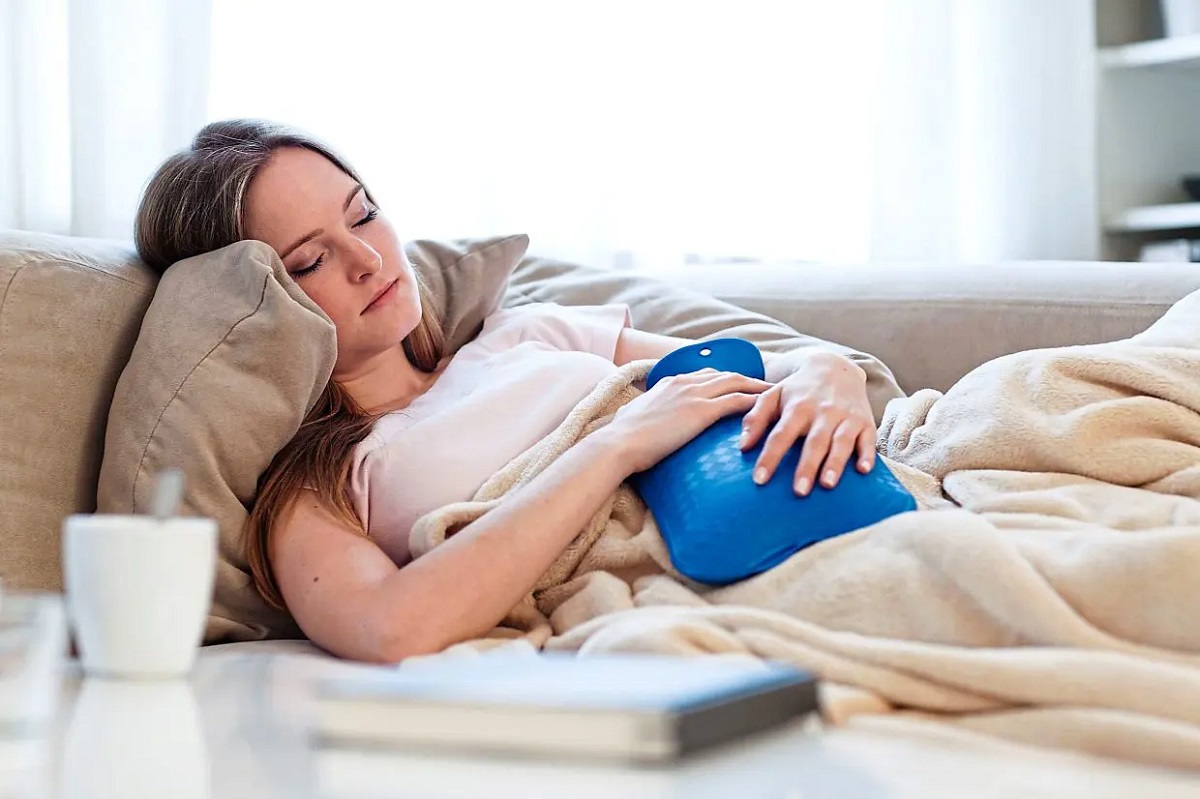Managing Menstrual Health During Fall Season: Tips For Comfort And Well-being

Menstrual Health During Fall: As the summer fades into fall, the seasonal transition can bring changes not only in the environment but also in how our bodies function.
For many women, the shift to colder weather can impact their menstrual health, influencing everything from hormone regulation to how the body copes with common period symptoms like cramps, mood swings, and fatigue. Menstrual health during the fall season demands attention to diet, physical activity, mental well-being, and comfort to ensure that the body is well-supported during these colder months.
Managing Menstrual Health During Fall Season
The Impact Of Seasonal Changes On Menstruation

Menstrual Health During Fall, Fall ushers in shorter days, cooler temperatures, and often, more sedentary indoor activities. These factors can affect the menstrual cycle in several ways. As temperatures drop, the body has to work harder to regulate its internal temperature, which can lead to increased fatigue and changes in energy levels. Additionally, the reduction in daylight hours can disrupt sleep patterns and lower serotonin levels, contributing to mood swings, irritability, and even seasonal depression.
These hormonal shifts can exacerbate symptoms of premenstrual syndrome (PMS) and lead to a more challenging menstrual experience.
Menstrual Health During Fall, Understanding the relationship between seasonal changes and menstruation can help women make better choices in their self-care routine during this time of year. By making simple adjustments in diet, exercise, and lifestyle, women can minimize discomfort and promote overall well-being.
Fall Diet For Menstrual Health
Menstrual Health During Fall, Eating seasonally is not only good for the planet, but it’s also beneficial for menstrual health. In the fall, nutrient-dense foods like pumpkins, squashes, root vegetables, and leafy greens are abundant, and they provide essential vitamins and minerals that support the menstrual cycle.
Pumpkins And Squashes: Rich in beta-carotene, these foods help to regulate hormone production and reduce inflammation, which can alleviate menstrual cramps.
Leafy Greens: Kale, spinach, and Swiss chard are high in iron, which is especially important for replenishing the body’s iron levels during menstruation, as women lose iron through their periods.
Omega-3 Rich Foods: Fatty fish such as salmon and sardines can help reduce inflammation, a key contributor to painful periods. Omega-3s are known to reduce the production of prostaglandins, the hormones responsible for menstrual cramps.
Menstrual Health During Fall, Incorporating these seasonal foods into a balanced diet can help manage the discomfort often associated with menstruation, ensuring the body receives the nourishment it needs during this time.
Coping With Menstrual Discomfort In Cooler Weather
Menstrual Health During Fall, As the temperatures cool, many women notice an increase in muscle stiffness and joint pain, which can intensify menstrual cramps. The fall season is an ideal time to embrace warmth as a therapeutic tool for menstrual health. Warm baths infused with Epsom salts can relax muscles and relieve cramps, while using heat packs on the lower abdomen can provide instant relief for painful cramps.
Additionally, warm beverages like herbal teas are not only comforting but also therapeutic. Ginger tea, for instance, has anti-inflammatory properties that can reduce menstrual pain. Cinnamon tea is another excellent choice, as it helps improve blood circulation, which can ease cramps.
Seasonal Affective Disorder (SAD) And PMS
Menstrual Health During Fall, For some women, the transition to fall can bring more than just physical discomfort. The reduction in sunlight during the fall months can trigger seasonal affective disorder (SAD), a type of depression that typically occurs during the fall and winter months. For women who already struggle with PMS-related mood swings, the onset of SAD can amplify feelings of irritability, sadness, and anxiety.
To combat this, light therapy has been shown to be an effective treatment for SAD. Exposure to natural sunlight during the day, even in short bursts, can help regulate serotonin levels, which improves mood. For those who cannot get enough sunlight, light therapy lamps can be used as an alternative. Regular exercise, even if it’s just a daily walk, can also boost serotonin levels and improve overall mood.
Hydration And Skincare For Menstrual Health In Fall

Menstrual Health During Fall, One of the often-overlooked aspects of menstrual health is hydration. In the fall, the cooler weather can reduce thirst, and many women may inadvertently become dehydrated. However, staying hydrated is crucial for maintaining energy levels, preventing headaches, and promoting healthy circulation during menstruation.
Drinking enough water not only helps alleviate common period symptoms like bloating and fatigue, but it also supports the skin, which can become dry and flaky in colder months. Hydration can also minimize acne outbreaks, which are often exacerbated by hormonal fluctuations during the menstrual cycle.
Menstrual Health During Fall, In addition to staying hydrated, using gentle, moisturizing skincare products can prevent the skin from becoming irritated and dry during the fall. Opt for creams and oils that are rich in hydration to protect the skin’s barrier against the dry, cool air.
Exercise And Movement During Fall
Menstrual Health During Fall, While the colder weather may tempt many to stay indoors and avoid physical activity, exercising during menstruation can be incredibly beneficial. Movement, particularly gentle exercises like yoga, walking, or Pilates, improves circulation, reduces bloating, and releases endorphins, which help combat mood swings and fatigue.
In particular, yoga poses that focus on stretching the lower back and abdominal muscles can relieve tension and reduce the intensity of menstrual cramps. Even a short 20-minute session of yoga or light stretching can make a noticeable difference in how the body feels during menstruation.
Final Thought: Embracing Fall For Menstrual Health
Menstrual Health During Fall, Fall is a beautiful season of change, and by embracing this transition, women can make simple yet effective adjustments to support their menstrual health. Focusing on a nutrient-rich diet, staying active, and prioritizing hydration are key steps in managing menstrual discomfort. Additionally, being mindful of mood changes and addressing them through light therapy, exercise, and self-care routines can help women navigate both the physical and emotional challenges that come with menstruation during the fall season.
Menstrual Health During Fall, By preparing the body and mind for these seasonal changes, women can not only reduce the discomforts of menstruation but also enhance their overall well-being during this time of year.
Also Read:
Irregular Menstrual Cycles Increase The Risk Of Heart Disease
Understanding The Menstrual Cycle: Health Impacts, Challenges, And Effective Management For Women
Women Perform Better During Menstruation And Make Fewer Mistakes
The Evolving Health Journey Of Women: Key Challenges And Well-being Across Life Stages




